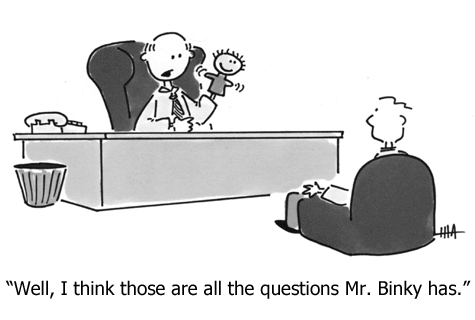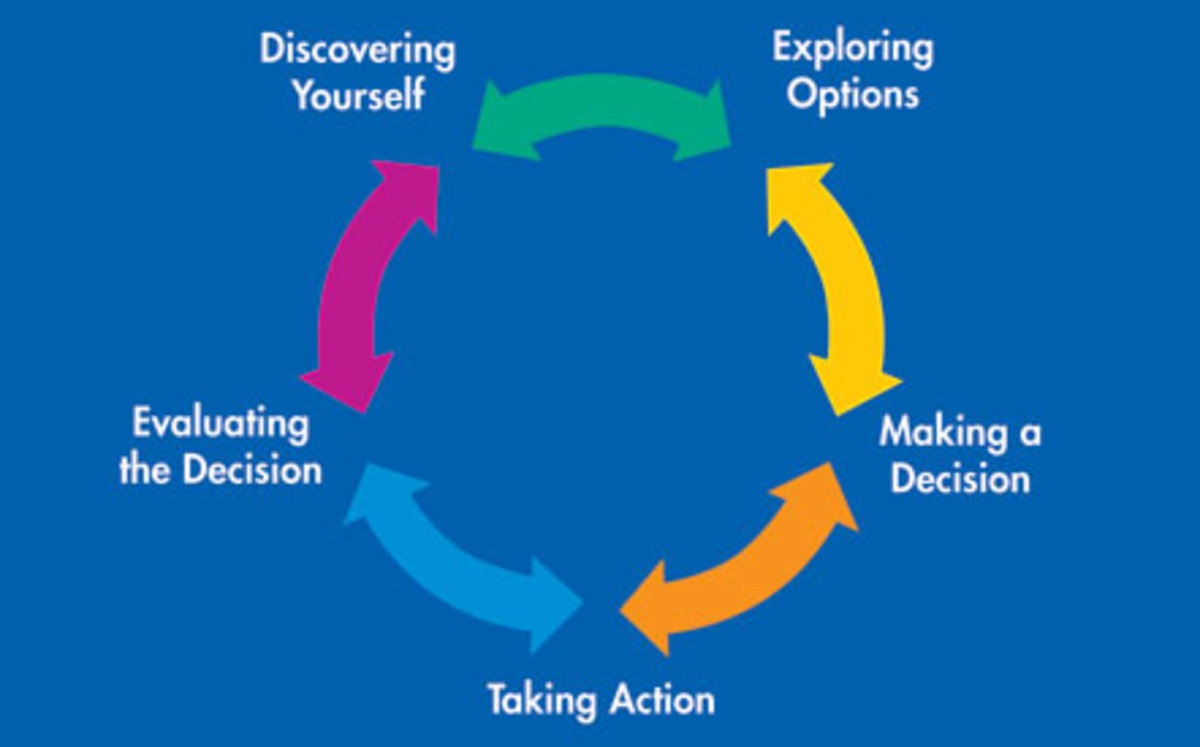Coaching Problem Solving and Decision Making

Coaching Tips and Quizzes
Enjoy this five part article series on coaching.
Problem Solving and Decision Making Barriers and What To Do About Them
One way to diagnose the issues your coachee faces on a day-to day basis is to try the following questionnaire together:
For extra reading on how to sell a coaching product or service on your website go to this kindle download.
Coachee Questionairre
Where 10 is “all of the time” and 1 is “never” put a number next to the following statements about the company or organisation you work for.
- People don’t get punished for mistakes, especially ‘mistakes’ that are generated by innovation, unless such mistakes are repeatedly perpetrated and are clearly gross misdemeanours.
- People speak up, even if they have something critical of ‘authority’ to say.
- Staff seek out responsibility; they look for tasks that will stretch them.
- Coaching is the default leadership style for the whole organisation when dealing with each other and our stakeholders.
- Decisions are driven down to the lowest possible level; even the most junior people are encouraged to use their own judgement, especially when dealing with customers.
- v Staff automatically expect and get developmental coaching from their immediate bosses.
- Staff use a coaching approach with customers and suppliers.
- Coaching is the basis of the HR and performance management systems.
- There is loyalty to the organisation; this includes defending it in public if others attack it.
The higher the scores, the closer the company is to adopting a predominant management style of coaching. This makes you and the coachee more aware of organizational barriers and can be used by you to construct hourly session topics.
Extra reading recommended
Managing Coaching at Work by Jackie Keddy and Clive Johnson (2011)
Creating a Coaching Culture by Peter Hawkins (2012)
Understand the key issues organizations face and this will help you coach your client through them, and help them make effective decisions and solve problems.
Problem 1: Embedding coaching and mentoring during times when budgets are under pressure.
Solution 1: RESOURCES– One person or one department oversees the coaches.
Coaching can be implemented on an ad-hoc basis, with senior executives benefitting initially, and/or bringing coaches with them when they change jobs. Staff might hire coaches from hidden slush funds, choose someone who is an acquaintance and has completed a one-day course, or be allocated a coach because they are difficult to deal with and no-one wants to undertake performance management with them.
It is important to keep control of costs by having coaching centralized. One person or office aware of all activities and how the company wants to implement the use of coaching could be something you can offer or your coachee can champion.
TRUE STORY: At one recent coaching conference, the then newly appointed Head of Coaching at a well known global supermarket chain revealed her horror at initially finding that over a million pounds was being spent annually on coaching, but no-one knew who these coaches were, what their quality was or how effective their interventions were!
Problem 2: Developing, sourcing, and maximizing the use of coaching and mentoring to meet business needs.
Solution 2: TIME – A Coaching culture is achievable over a course of time.
The key factor to the success of a coaching culture, is recognition that it will take time to change the organization and your coachee’s work style. This could be a matter of weeks or months or longer if you working with entrenched values and attitudes.
Problem 3: Creating a compelling business case/individual case for sustaining coaching approaches.
Solution 3: OWNERSHIP – the CEO versus the HR Team Manager.
To make coaching part of the overall strategy it is necessary to start with a clear look at what the current culture is, and have the executive team willing to take responsibility for the ways in which that culture is less than a perfect fit, with a coaching approach.
This is tough. Many executive teams would rather blame middle managers for their inexplicable refusal to take responsibility, than accepting that the behaviour of the executive team is where it all starts.
You then need a coaching champion, preferably the CEO, who can explain what coaching and mentoring is, talk enthusiastically about its benefits from personal experience, and be willing to devote a dedicated budget to a program of culture change, where coaching is the centerpiece.
If left to the HR Team, or undertaken by an individual employee, the likelihood of co-option into the company mission and strategy is less likely.
TRUE STORY: City Council Social Worker:
“After a 2 day coaching course I realised that instead of helping my staff by “telling” them what to do, I was in fact making them dependent on me and stopping them from coming to their own solutions.
I rolled out the training to my team of social workers, all of whom were under huge pressure and completely stressed, turning to me for guidance, help and support on a daily basis. They in turn started to use a coaching style with their clients.
I remember feeling guilty as I now literally had hours of free time, and it hit me how much of my time had been spent ‘rescuing’ my staff, doing their work for them, (all the time thinking I was being a kind, supportive manager). After just a few months the difference in my team was palpable, stress was reduced, absenteeism was down, confidence was high, and instead of going home drained, now I had time on my hands.
As a result of all this free time I was able to focus on my own career development and within six months was promoted twice – all of this due to coaching rather than telling!”
Problem 4: Making coaching a part of managers’ everyday skill-sets.
Solution 4: CHANGE ATTITUDES – Managers and coaches need to pass ownership of ‘action’ decisions to the coachee.
Many managers think they are letting go of responsibility if they adopt a coaching attitude. Coaching is not by definition ‘nice’ or ‘soft’ and can actually be very challenging. For example there may be times a stronger tone is used, for example; “Yeah, right, I understand absolutely what you’re saying, I just need to know what you’ve decided to do …”. Here the manager is acknowledging they’ve heard what is happening and challenging the subordinate to come up with an answer.
It is essential a manager is prepared to encourage or mildly force a subordinate to ‘own’ both the situation and the solutions. That’s what makes coaching a less directive style.
Problem 5: Evaluating the results and benefits of coaching and mentoring
Solution 5: VALUES – It is essential any coaching and mentoring program is evaluated in order to reflect the values you want achieved.
Summary: Problems and Solutions – For your coaching portfolio document which organizational barriers effect your coachee and which will be used to inform your coaching sessions.
Barriers
Strategies
Budget pressure
Resources and allocation of coach/mentors to one department/person.
Developing
Time is needed to implement a full coach/mentor system.
Ownership/Buy-In
A CEO as opposed to HR should champion.
Everyday Application
Attitudes must focus on developing a less directive style of management.
Evaluation
Values-centred evaluation tools needed.
Operational barriers exist where coaching is difficult to apply to the day to day running of the organisation. Below is a list of these, and what strategies you can apply to overcome them with key stakeholders:
Default leadership and management style:
If you have many clients in one company, from the CEO to the lower levels, apply the same level of coaching training throughout the organisation.
Insist that recruitment policy include people with the temperament and aptitude to learn coaching and mentoring, and suggest this is a core competency for the organisation.
Coaching Customers:
Ensure front-line coachees who interact with customers have the power to resolve customer problems.
Encourage coachees to coach customers into understanding the company processes and learning these for themselves, so that next time they buy from you they feel empowered.
Coaching as a sales method:
Instead of displaying product knowledge as a first approach, sales staff coachees can apply coaching to build rapport, establish customer needs and the present situation, and then present a range of options. This approach creates the impression that sales are underpinned by integrity and aimed at meeting buyer’s needs.
Coaching Service Users:
Treating service users, who often receive services for free and under direction, is something that can benefit from switching to less directive coaching approaches. Clinicians trained as coaches through the London Deanery Programme soon realised that what worked with their colleagues would also work with patients:
“I thought I already treated my patients as partners, but I realise now I didn’t. The main change has been in my attitude: I now expect they are perfectly capable of taking a resourceful approach to their own health, especially where lifestyle choices can have a big impact on prognosis. In effect I help them now to design their own lifestyle programs and it makes all the difference in the world” Cardiac surgeon.
Coaching Suppliers:
Coaching suppliers is a close cousin to negotiation and mediation, both of which use similar skills. Direct coachees to first establish rapport, determine what situation a supplier is in, promote several choices or deals to them, agree to action, and offer to review the situation, as things change in the market.
Portfolio piece: Ask your coachee to write down:
One or more operational barriers and how they could benefit using coaching approaches in their workplace. How would sales or service provision improve as a result of the new approach?
Coaching Tip: Stay neutral when your coachee needs to problem solve or make important decisions.
Relaxing our natural urge to know the answer, solve the problem, and retain a sense of control during coaching conversations, is a constant challenge. The three suggestions below will help you to go beyond the limitations of your own ego.
· Relate to someone else’s world by relaxing your grip on yours.
· To relate effectively to the person we are coaching, we must do so on their terms.
· Realise the irrelevance of right and wrong:
1. Disagreeing with the view of the coachee, and stating a contradicting opinion, distracts and ensures focus on the argument, rather than work processes and improvements.
2. Ignoring your disagreement and acting as if you agree is something your coachee will pick up on, and this will impact your integrity as a coach.
3. Stay in a neutral posture, and don’t react to the critical element of the view expressed by a coachee. This is more effective, and requires you to quash your natural desire to defend. The result is you maintain your integrity and rapport with the coachee.
The next article in this five part mini-series on Coaching is called Communication Strategies and Tools for Coaches. These articles are designed to enhance the practice and study of professional coaches who desire industry qualifications.
© 2013 Lisa McKnight








